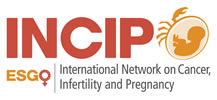Radiotherapy during pregnancy is possible. However, ionizing radiation can result in fetal harm. Risk of lethality is highest during the pre-implantation period (till day 10 postconception), whereas malformations and growth retardation are mainly induced after exposure during the period of major organogenesis (week 3 till 7 postconception). Between week 8 and 25 after conception, the central nervous system (CNS) is most vulnerable to radiation (decrease in intelligence quotient (IQ), mental retardation). From 25 weeks after conception onwards, the effects on the CNS are less striking, but the major risk quantitatively is probably subsequent cancer development (stochastic effects). Risks are clearly induced when a fetal dose of 100 mGy exceeded. Applying diagnostic radiology and curative radiotherapy this threshold dose is normally not attained during pregnancy, provided that the tumors are located sufficiently far away from the unborn child, as well as that certain precautions to protect the unborn child against leakage radiation and collimator scatter have been taken. It is important to calculate the fetal dose by measurements in a phantom before treatment is given. The models can be adopted for routine treatment planning, risk assessment, and the design of appropriate fetal shielding, in order to comply the ALARA principle (As Low A Reasonable Achievable).Radiation of the pelvis or organs close to the fetus is contraindicated. Multidisciplinary discussion with a physicist is mandatory in order to estimate the fetal exposure and risk.






